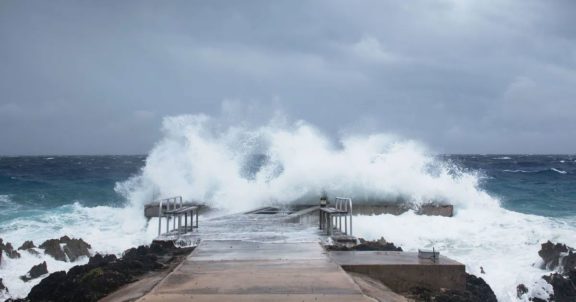Blog Post
Tips for Preparing Your Fleet for the 2020 Hurricane Season
By Suresh Rajapakse
July 8, 2020

The 2020 Atlantic hurricane season officially began on June 1. In this six-month period that lasts through November 30, the National Oceanic and Atmospheric Administration predicts 13 to 19 named storms, 6 to 10 hurricanes, with 3 to 6 potentially becoming major hurricanes. That said, the outlook forecasts a 60% chance of an above-normal season.
The Federal Emergency Management Administration (FEMA) has led the federal response to the COVID-19 pandemic since it began, stretching their already limited resources thin. This makes it especially important to prepare for extreme weather to ensure your drivers are safe and your business keeps moving.
Fleet Office Tips During Hurricane Season
Pack safety kits: It’s important for your drivers to have supplies on hand if they were to face severe weather and need to shelter in place. Ready.gov recommends packing food, water and supplies to last 72 hours. Additional items to pack in your safety kit include flares, flashlights, paper maps and cash for emergency purchases.
Plan evacuation routes: Depending on a hurricane’s forecasted path, it may be necessary for drivers to evacuate from the town or general region. Coastal states’ emergency management departments publish evacuation routes and zones, so make sure this information is shared accordingly with your drivers.
Identify shelters: In the unfortunate case that your drivers need to seek safety at a shelter, it’s important to know where is the nearest one to their home and driving route. Make a list of local hurricane shelters so the information is on-hand if drivers need access.
Update emergency plans: In addition to establishing an operating procedure that goes into effect when extreme weather hits, it’s important to examine your fleet polices. When drivers experience extreme weather, make it easy as possible for them to access fleet resources. Consider having a protocol that goes into effect that raises fuel limits.
Fleet Driver Tips During Hurricane Season
Prepare your vehicle: In addition to ensuring your safety kit is fully stocked and their vehicle has no overdue repairs, make sure to check the spare tire is in good working condition. Also, hold off on non-essential repairs so drivers won’t be at a service station during extreme weather.
Check out our driver tip sheets on hurricane preparation and safety.
Allow for more travel time: Planning ahead is so important during an extreme storm. Traffic jams occur often during these situations, making it important to add extra travel time to your schedule, so drivers are not rushing and putting themselves in harm’s way.
Monitor road conditions: Drivers should always be on guard since storms can worsen in an instant. When a storm is approaching, they should listen to local radio stations for updates on road conditions. If they need additional information, they should pull over to a safe parking space before accessing emergency websites on mobile devices.
Watch surroundings carefully: When extreme winds or storm surge occurs, drivers should slow down and use extra caution. Hydroplaning can occur from rain alone. Remind them to watch for downed powerlines as water presents an electrocution hazard. They should never drive through standing water. It’s recommended to turnaround when facing water above six inches in depth. Also, advise to never drive through barricades as they warn of potential hazards ahead.
Wheels can assist in hurricane preparation. From organizing safety kits to disseminating driver communication and resources, work with your team to ensure drivers have all the resources needed when extreme weather hits.
How are you preparing for the 2020 hurricane season? Let me know at [email protected].